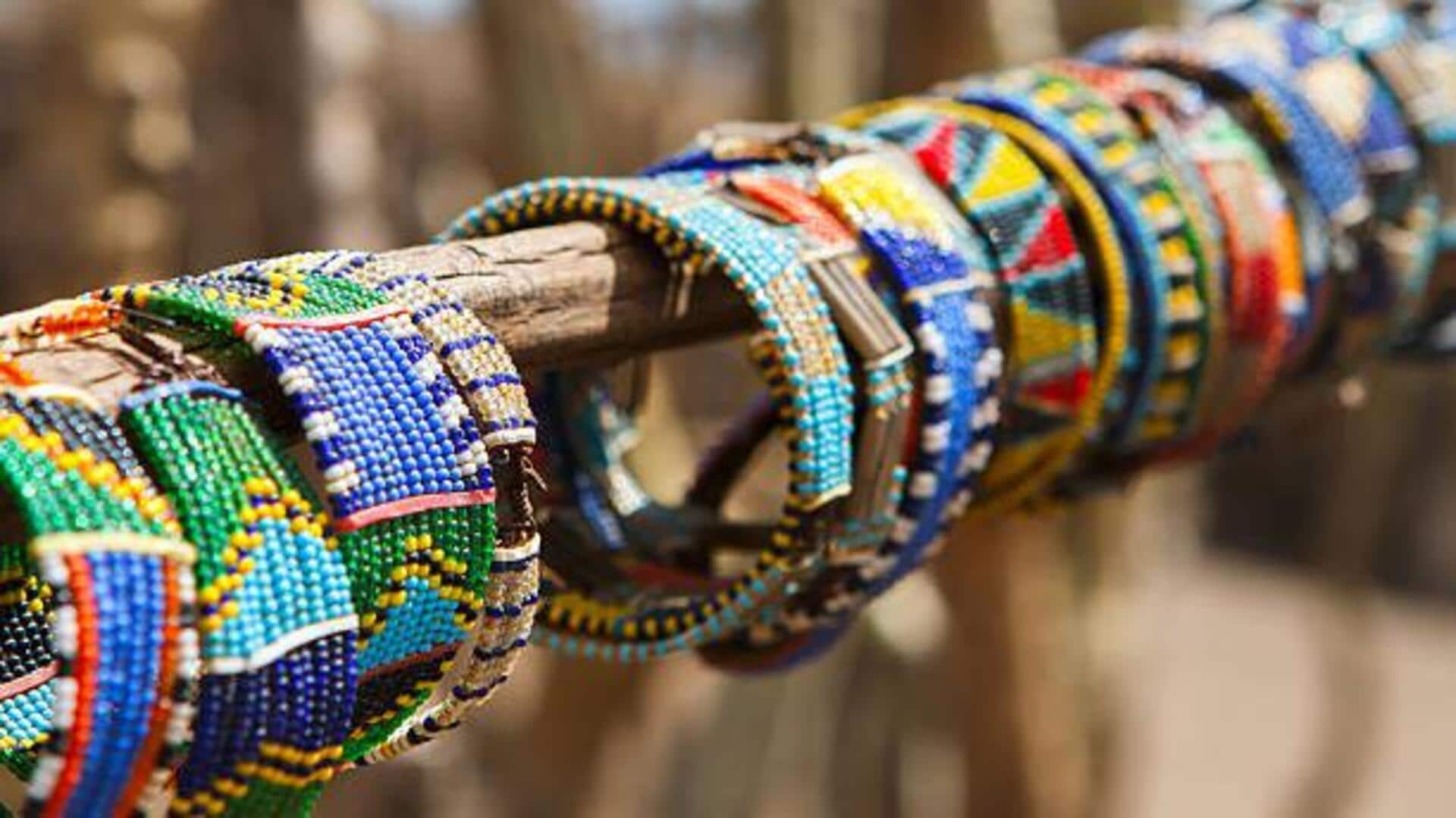
All about Maasai jewelry
What's the story
Maasai jewelry is a colorful expression of culture and identity, with every bead telling a story. The Maasai people, native to Kenya and Tanzania, have used jewelry for centuries as a mode of communication and tradition. These colorful adornments aren't merely decorative; they symbolize social status, age group, marital status, and even certain events in the wearer's life. Here's what the beads signify.
Color symbolism
The significance of colors
In Maasai jewelry, colors are not just pretty shades; they are messengers. Red represents bravery and unity. Blue is for energy and sustenance. Green denotes health and land. Orange is for hospitality. Yellow is for fertility. White means purity. Black is for unity. Every single piece is made with precision to speak of these meanings, rendering every necklace or bracelet a story.
Craftsmanship
Beadwork techniques
The Maasai art of beadwork also involves intricate techniques passed down generations. Women largely make these pieces with small glass beads strung together on wire or thread. The process takes precision and patience as patterns are meticulously designed to ensure symmetry and balance. This craftsmanship not only showcases artistic skill but also preserves cultural heritage.
Social status
Jewelry as social indicator
Maasai jewelry also acts as a marker of social standing in their community. Different designs are donned by men, women, warriors, elders, married people, or those going through rites of passage such as circumcision or marriage ceremonies. Unmarried women, for example, tend to wear large flat beaded collars, while married women may wear long necklaces with particular patterns denoting their husband's clan.
Evolution in style
Modern influence on traditional designs
Traditional Maasai designs have evolved, taking on modern trends like plastic beads, which are more accessible and cost-effective than the previously used glass ones. This shift allows for broader experimentation while maintaining the authenticity of this ancient practice. It showcases the adaptability and resilience of the Maasai people amidst globalization.